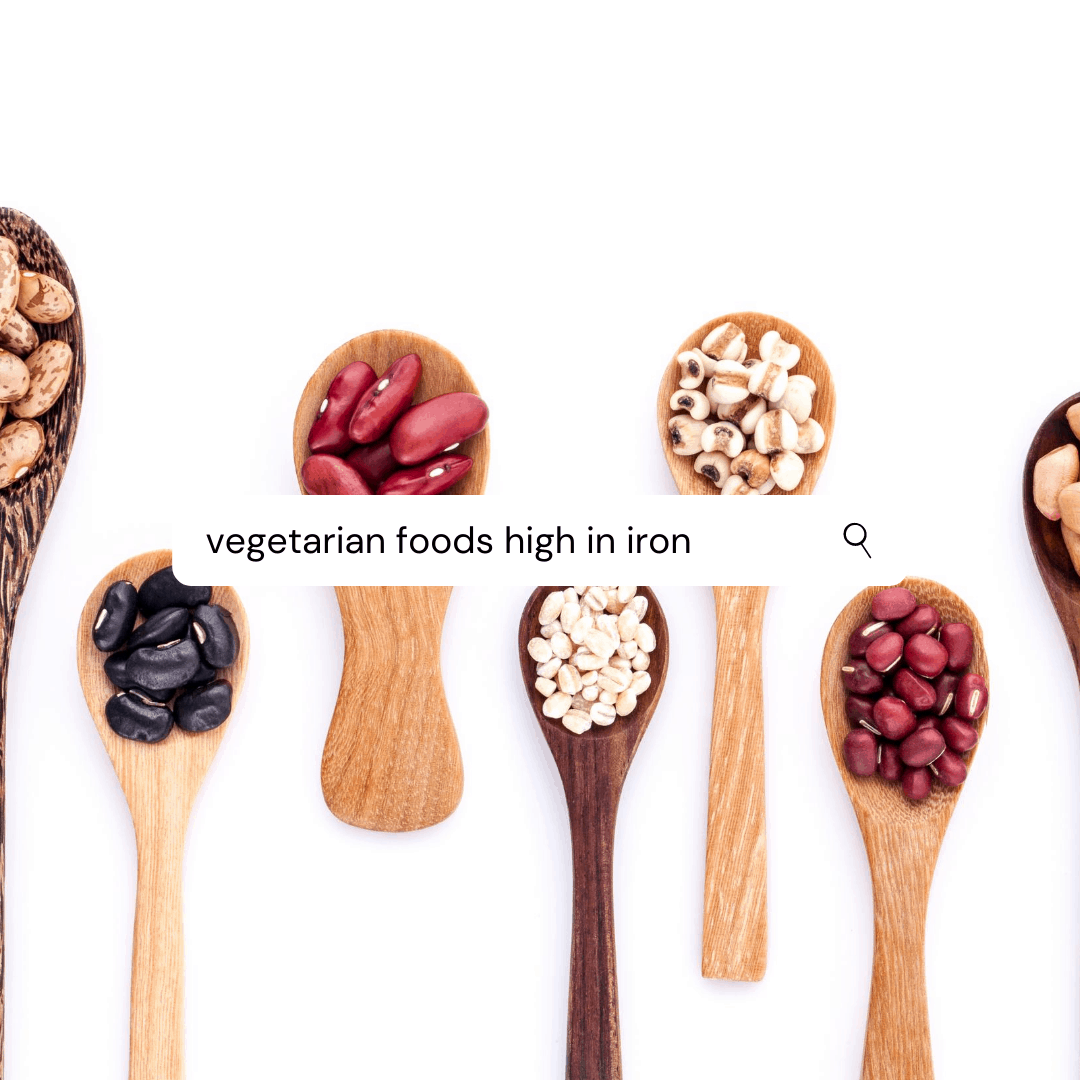Iron Rich Foods to Add to Your Diet
Iron is one of the most abundant elements on Earth, yet it is the most common nutrient deficiency worldwide.[1]
About 70 percent of the iron absorbed from your food is used to build oxygen-binding proteins called hemoglobin. It plays a critical role in transporting oxygen around your body, while the remaining iron is used in enzymes or stored in ferritin to provide a buffer when your intake is low.[2]
If you regularly feel tired, weak, and irritable, or exercise and mental focus become harder than usual, you may be experiencing symptoms of iron deficiency anemia — where the hemoglobin in your red blood cells becomes too low to transport oxygen throughout your bloodstream.[3] People who follow a vegetarian or vegan diet need to be particularly watchful about their iron levels.

How much iron do you need?
Iron comes in the form of heme iron from animal sources and non-heme iron from plant sources. The recommended iron intake for people who eat a vegetarian or vegan diet is higher than for people who eat meat. This is because non-heme iron is not absorbed by the body as well as heme iron. It is recommended that vegetarians and vegans aim to meet a daily iron intake of.[4]
| Age (years) | Men | Women |
| 14 to 18 | 20 mg | 27 mg |
| 19 to 49 | 14 mg | 33 mg |
| 50 and above | 14 mg | 14 mg |
| Pregnancy | N/A | 49 mg |
Although there is no specific recommendation for children who follow a vegetarian diet, the general recommended iron intake for children is.[3]
| Age (years) | Boys | Girls |
| 1 to 3 | 7 mg | 7 mg |
| 4 to 8 | 10 mg | 10 mg |
| 9 to 13 | 8 mg | 8 mg |
Iron-rich plant foods
Even though heme iron is better absorbed into the body than non-heme iron, you can still fulfill your iron requirements following a vegetarian or vegan diet.
Many plant foods contain iron. Eating a wide variety of these can help you maintain healthy iron levels. Combining plant sources of iron with vitamin C rich foods in the same meal will also enhance your absorption of non-heme iron.[5] Here’s how much iron some delicious vegan-friendly ingredients can add to your meals and snacks.[1,6]
Beans and lentils
- Dried soybeans, cooked: 5 mg per ¾ cup
- Green soybeans, cooked: 4 mg per ½ cup
- Lentils, cooked: 9 mg per ¾ cup
- Red kidney beans, cooked: 9 mg per ¾ cup
- Refried beans, canned: 7 mg per ¾ cup
- Chickpeas, canned: 2 mg per ¾ cup
- Lima beans: 2 mg per ½ cup
Nuts and seeds
- Pumpkin seeds, roasted: 7 mg per ¼ cup
- Sesame seed butter (tahini): 3 mg per 2 tbsp.
- Sunflower seeds, dry roasted: 2 mg per ¼ cup
Vegetables
- Spinach, cooked: 4 mg per ½ cup
- Spinach, raw: 9 mg per 1 cup
- Swiss chard, cooked: 1 mg per ½ cup
- Beet greens, cooked: 5 mg per ½ cup
- Green peas, cooked: 3 mg per ½ cup
- Potato, baked: 9 mg per 1
- Seaweed, dried: 7 mg per ½ cup
- Beets, boiled: 7 mg per ½ cup
Cereals and breads (cooked)
- Enriched cold cereal: 5 mg per 30 g
- Enriched hot cereal: 4 mg per ¾ cup
- Quinoa: 5 mg per ½ cup
- Oats: 3 mg per ¾ cup
- Pearled barley: 1 mg per ½ cup
- Bagel: 9 mg per ½
- Whole wheat bread: 9 mg per slice
- Whole wheat pasta: 8 mg per ½ cup
Other
- Tofu, medium or firm: 4 mg per ¾ cup
- Hummus: 2 mg per ¼ cup
- Sauerkraut: 1 mg per ½ cup
- Fortified soy beverages: 1 mg per 1 cup
Tips for boosting iron levels
With the right food choices throughout the day, you can enjoy the enormous health benefits of a plant-based diet while also boosting your iron levels. In addition to eating plenty of iron rich foods, you can help increase your iron intake and absorption by:
- Cooking with a cast iron skillet or pan
- Avoiding caffeinated or tannin containing beverages that hinder absorption, such as wine, black tea, herbal tea, or coffee, within one hour of your meal
- Eating dairy products and calcium supplements separately from iron-rich foods
If you are having trouble maintaining adequate iron levels through diet alone or you are recovering from iron deficiency, supplementation is a helpful option that you should discuss with your health care practitioner.
References:
(1) World Health Organization. Iron deficiency anaemia [Internet]. Who.int [cited 24 July 2020] Available from: https://www.who.int/nutrition/topics/ida/en/
(2) Gupta CP. Role of iron (Fe) in body. IOSR Journal of Applied Chemistry. 2014; 7(11):38-46.
(3) Lopez A, Cacoub P, Macdougall LC, et al. Iron deficiency anaemia. The Lancet. 2016; 387(10021):907-16.
(4) HealthLinkBC. Iron and your health [Internet]. Healthlinkbc.ca 2020 [cited 24 July 2020]. Available from: https://www.healthlinkbc.ca/healthlinkbc-files/iron-health
(5) Government of Canada. Iron [Internet]. Canada.ca 2019 [cited 24 July 2020]. Available from: https://www.canada.ca/en/health-canada/services/nutrients/iron.html
(6) HealthLinkBC. Iron in foods [Internet]. Healthlinkbc.ca 2020 [cited 24 July 2020]. Available from: https://www.healthlinkbc.ca/healthlinkbc-files/iron-foods
(7) Alves C, Saleh A, Alaofè H. Iron-containing cookware for the reduction of iron deficiency anemia among children and females of reproductive age in low- and middle-income countries: A systematic review. PLoS ONE; 14(9): e0221094.
.png)